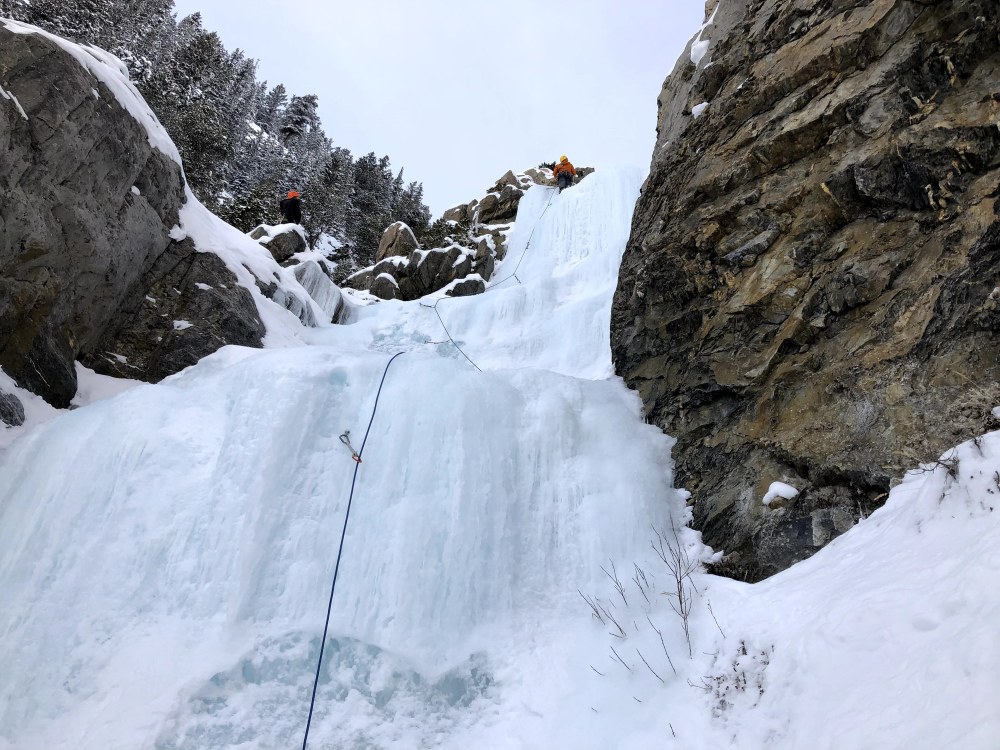
As Mountaineers, we are committed to learning from our experiences. We examine every incident that happens on a Mountaineers trip for opportunities to improve the ways we explore and teach. Our volunteer safety committee reviews every incident report and picks a few each month to share as examples of ‘Lessons Learned’. The trip report below describes what happened on this trip, in the leader’s own words, and outlines the lessons the leader has identified. In some cases, we offer additional key learnings from the incident.
Sharing incidents creates an opportunity to analyze specific incidents and also identify larger incident trends. We appreciate every volunteer trip leader who takes the time to share their incidents and near-misses so that others can benefit. We ask that readers engage critically and respectfully in the spirit of sharing and learning.
Hyalite Canyon, MT - 18 January
FROM THE INCIDENT DATABASE: LEADER INCIDENT REPORT
LEADER
We were nearing the end of our last ice climbing day in Hyalite Canyon, MT. Participants in my group had each led their first (and some their second) WI3 climbs. We relocated to Fat Chance WI3, and I asked the group in any participant wanted to lead the climb. One offered to lead it and this climb was fully within this participant's ability level.
At the top of the climb is a large tree with a sling for rappelling and this participant affixed the rope to this anchor (which is what other parties do, too). After being lowered, the other group leader and I asked the participant what was used for anchoring the rope. The answer was that this participant had clipped the rope to the tat with a quick draw and then used a locking carabiner (Editor's Note: "tat" refers to old pieces of webbing or other ad-hoc anchor remnant. Learn more.)
A few participants climbed the lower, steeper section and lowered off. The last participant climbed up to the tree to clean the gear and lower off. When he got up there, he yelled out something to the effect of having been top-roping on a single non-locking carabiner.
When all people were back on the ground, we asked the individual that lead the climb what exactly was used in the anchor. This participant had used a quick draw and a locking carabiner, but evidently put the locker on one side of the quick draw and locked it to the tat and clipped the rope with a non-locking carabiner. This surprised us because this participant has climbed for several years and built two perfect anchors with screws, cord, and locking carabiners on the two prior leads.
We had a lengthy discussion about the risk that the other climbers were subjected to and that it is never, ever appropriate to make a top rope anchor with only one non-locking carabiner attaching the rope to the anchor (and I explained how this could become un-clipped and how climbers have fallen in the past).
Lessons Learned
We could have asked for an exact description of the anchor this participant created. Then we would have had a clearer understanding instead of interpreting the original explanation as a quickdraw as well as a locking carabiner.
This situation did not end poorly because we were not flipping the rope multiple times to get it on a different fall line, which kept the rope away from the carabiner gate and therefore did not un-clip itself when weighted.
Long story short, this could have ended very poorly for a participant. All participants learned (and relearned) that this was not an acceptable anchor set up and that they will never ever do this again.
 David Shema
David Shema